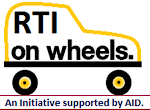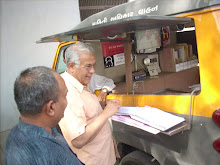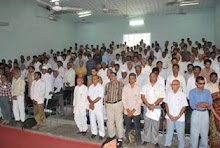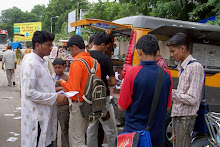The
Hindu: Jaipur: Monday, September 16, 2019.
Rajasthan’s
Jan Soochna portal is a step in the right direction for transparency in
governance
Fourteen
years since the implementation of the groundbreaking Right to Information (RTI)
Act, which has helped shed light on government works and administration, the
launch of the “Jan Soochna Portal” (public information portal) by the Rajasthan
government on Friday marks a milestone in increasing transparency and
accountability in governance. The portal details various schemes run by 13
government departments the employment guarantee programme, sanitation, the
public distribution system among others, by not only explaining the schemes but
also providing real time information on beneficiaries, authorities in charge,
progress, etc. The information provided is in-depth, covering the whole gamut
from the districts, blocks and panchayats, allowing access to details of
schemes implemented at these levels. This is a laudable effort by the State
government which is worthy of emulation by other States. The RTI Act had dealt
with the citizen’s right to know about public information and required public
authorities to expeditiously provide information on request from the citizenry.
This aspect of the Act brought a sea change in accountability and has led to
the possibility of a well-informed citizenry on the workings of the government.
While
RTI filings have increased exponentially and RTI-activism has become part and
parcel of civil society, there have been dilutions in the Act pertaining to the
appointments of information commissioners, therefore impinging on their
autonomy. Besides, the response rate to RTI requests has also slowed down
compared to the flurry in the immediate aftermath of the Act’s implementation.
These problems with the RTI law apart, it is important to note that Section
4(2) of the Act, which specifically enjoins upon public authorities to publish
information pro-actively, has not been implemented holistically so far. While government
departments have successfully taken to e-governance and there has been a rapid
release of public information on various government-run websites, this
information has often been parcelled, dispersed and difficult to parse. Some of
the better maintained central websites have also tended to deploy “dashboard”
information, which is meant more to showcase data and records rather than
release structured information for extensive study and for the knowledge of the
citizenry. As a one-shot portal for public information on government
programmes, the JSP, therefore, can advance the objective of transparency. The
challenge would be to ensure that the information flow remains unhampered over
time. Besides this, it is important to educate the citizenry about the use of
data on the portal. While digital connectivity and literacy have increased over
time, these have not adequately translated into digital knowledge of public
affairs.














































































